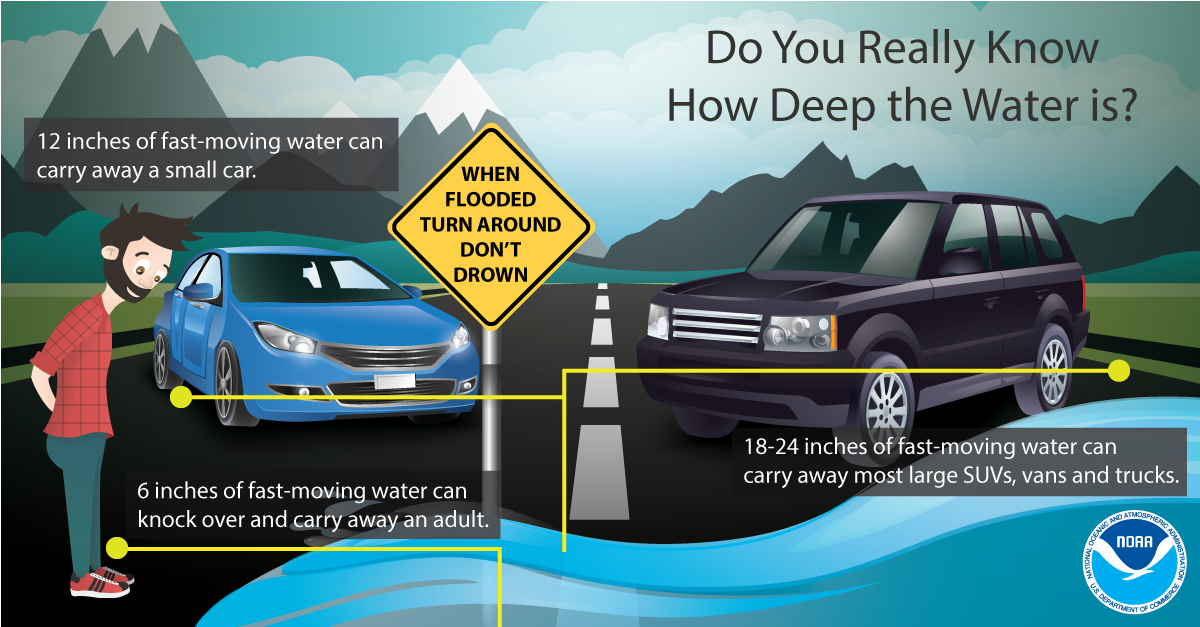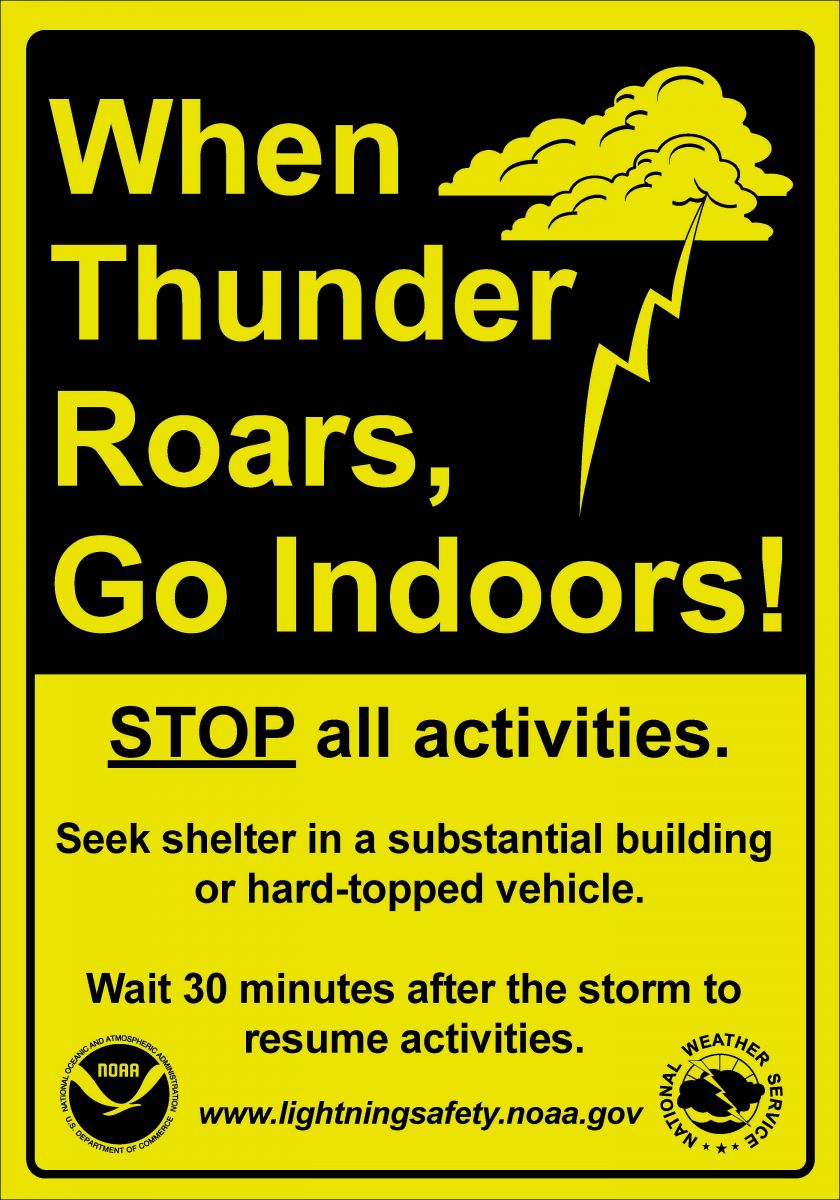When atmospheric conditions become "ripe" on specific days, severe weather is usually a result and happens anywhere abd at any time. A thunderstorm can turn strong enough to contain damaging winds, large hail, frequent lightning, and even tornadoes; all of which pose a danger to us and result in injuries or even fatalities. By understanding what to do before and during these severe events, however, you’ll be putting yourself in an extremely advantageous position by preventing the worst-case scenario against nature’s wrath.
First, lets understand the differences between a WATCH and a WARNING. These are issues by the National Weather Service, but get delivered in many ways; EAS alerts on your phones, weather apps, social media, radio broadcasts, and even from your local news station.
- A “Watch” essentially means that ingredients are favorable for a severe thunderstorm or a tornado to form. It does not indicate that severe weather is happening or imminent. In other words, have a plan of action ready.
- A “Warning” means that the ingredients favorable for a storm have produced some form of weather hazard or is likley to develop very soon. In other words, take action!

ImAnalogy explaning the difference between a watch and a warning.
Before the Storm Checklist
- Create an emergency plan for yourself, your family, and any pets. Know where emergency supplies are located (i.e., first aid kit, medicine, etc).
- Have an emergency kit created: Water, backup batteries and chargers, non-perishables, medicine, and flashlights.
- Ensure necessary electronics, such as phones and laptops, are fully charged just in case of power failure. As well as that, keep backup generators on hand, or consider purchasing one. It's not a bad idea to always have stored natural gas somewhere safe in situations like these!
- Make sure there isn't anything outside that can get blown away or damage other property. This should particularly include anything of value or items that can be easily carried away from strong winds. Either strap them down or take these inside before severe weather.
- Stay weather ready and informed! It’s crucial to own a battery-powered weather radio or some type of technological weather source so you’re always aware of what may be happening, what is expected to happen, and other important information surrounding the severe hazard.
The Dangers of Flooding: Turn Around, Don't Drown!
- Whether or not you have experienced flooding where you live; if it can rain, it can flood. All 50 states have a risk of flooding. Whether it's poor drainage or overflowing streams and creeks, all flooding produces the same impacts.
- Flash Flooding can be one of the more deadlier and sneaky severe hazards. If you’re driving and approach a flooded road or area: Turn Around, Don’t Drown! While it may be a cliché, it works. Driving through water is one of the most dangerous decisions you can make because you don’t know how deep it is. In these situatioins, your vehicle can stall and the water can be rushing and at dangerous speed to be able to topple over it (only takes 12’’ of water to float a SUV). The road can also collapse underneath. Always seek higher ground.
- Not only is flooding deadily, it is one of the most costliest forms of natural diasters in the United States. They lead to an average of $10 billion dollers in damage per year.

Image Courtesy of The National Weather Service
Lightning & Thunder: When It Roars, Go Indoors!
- Ever hear of the slogan, “Bolts from the blue”? Well, lightning can actually strike far from a storm, sometimes as far as 10 - 15 miles away! Even though the storm is not over you, or it's not activily raining, you're always at risk of being struck with thunderstorms nearby. Lightning can hit just about any object in a blink of an eye.
- The sky can even be clear before a strike can occur. It’s so important to immediately take shelter indoors or inside a vehicle, once you hear the sound of thunder or see the sky darkening ahead of you: all signs of a nearby storm. We have a great blog talking all about how lightening develops and the steps to take Here.

Image Courtesy of The National Weather Service : Lightning Safety Awareness
Tornadoes/Damaging Wind Gusts
-
In the case of an imminent tornado on the ground, headed toward your house, you have to prioritize one thing: Getting to the lowest location of your house (if you have a cellar, great!), and putting as many walls between you and the outside.
-
If you are not inside a building, lets say your car, get out and find the nearest ditch. Getting low to the ground is important, in order to keep yourself flat and protect from flying debris. It's necessarily not the tornado itself, but the debris the tornado is picking up from the intense winds that can do the damage. Following these steps can ensure you the safest possible way of protecting yourself from fatality or severe injury!

Image Courty of National Weather Service in Tallahassee, Florida via Twitter
- Let's say its not a tornadic storm, but still severe. Again, it doesn’t take a tornado on the ground to send flying debris or lethal projectiles in the air. Strong and severe wind gusts can be just as much, if not more potent, to knocking down a large tree, or several trees onto cars and structures. The best case scenario would be to stay away from any windows and again, get into an interior part of your home.

Image Courtesy Of Jonathan Erdman on Twitter
Large Hail
-
Hail comes in all shapes and sizes: From as small as a pea to as large as a softball. Because these ice stones are falling at fast speeds through the air from a storm, they can absolutely be dangerous. Windshields are most succeptible to damage from larger hailstones, as well as other types of outdoor property. Farms are most at risk of substantial damage, since many crops like wheat and corn are very sensitive to hailstones.
-
Hail can also bring physical harm to the body if they are big enough. Taking into acount how fast they are falling, a large hailstone can lead to serious head injuries without proper protection. In this case, it's best to just immediately take shelter if it starts to hail outside. If you're driving a vehicle during a hailstorm, either pull over or drive to the nearest structure with shelter and wait it out.

Comparisons of hailstones to objects, and general damage that can occur to property
These are just some quick tips to keep in the back of your heard during any severe weather event. By following these procedures in the case of any hazard, you're lessening the risk quite substantially of physical injury and harm. If you know where your emergency kit is, have a backup emergency plan and become proactive during threatening weather situations. Don't be afraid to be over cautious in any severe weather setup; since it only takes one to cause problems. Stay safe out there everyone.







